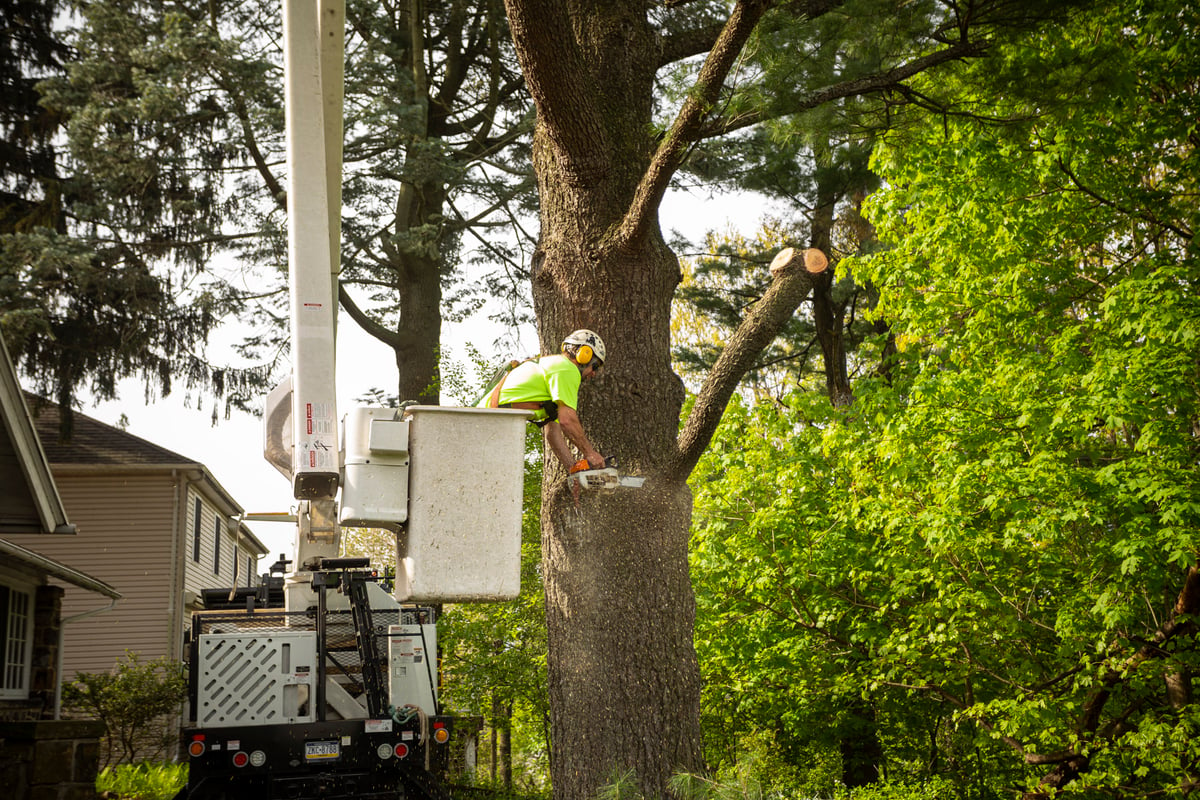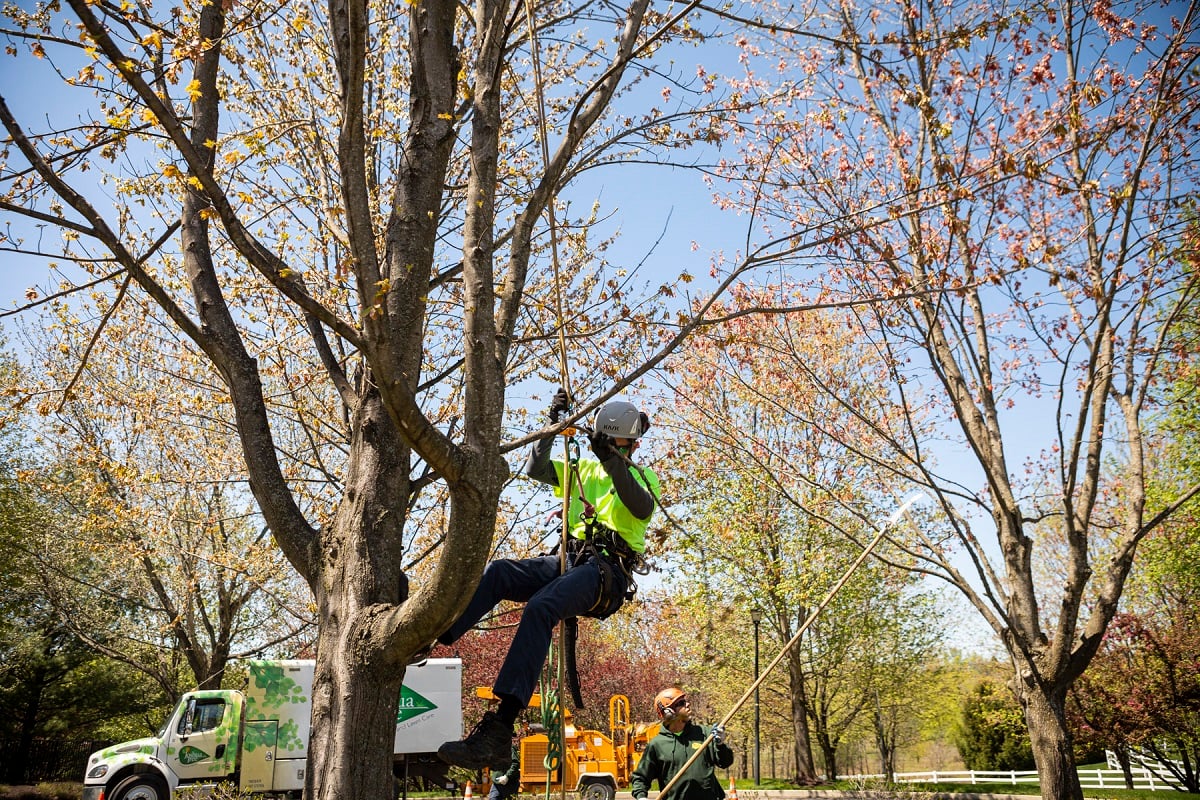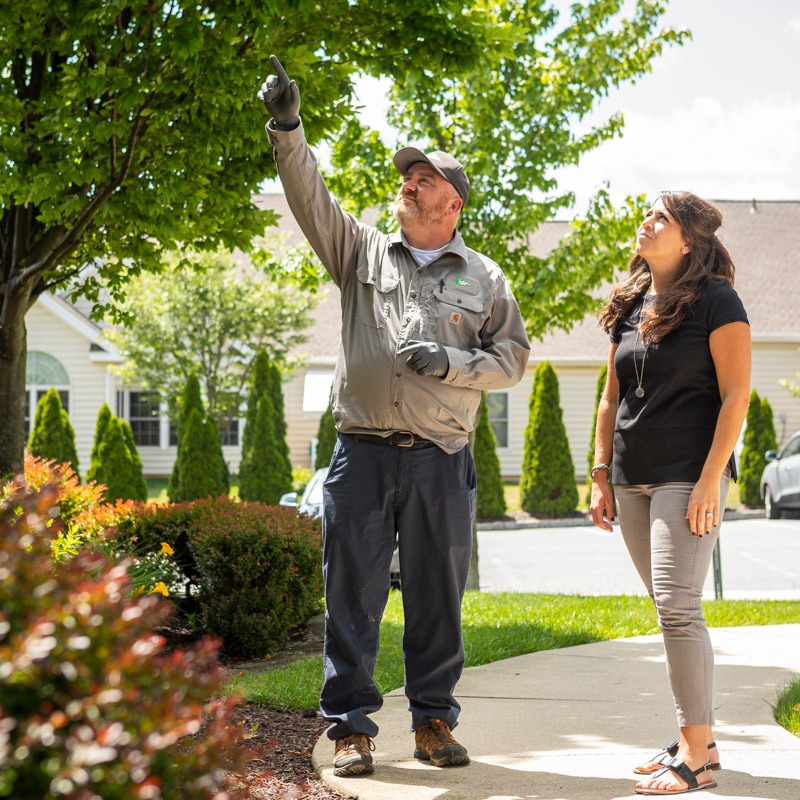There’s a lot more involved with tree pruning than people tend to realize. In fact, there are various tree pruning techniques or strategies that can be used depending upon your final goals and objectives.
One such strategy is tree canopy raising (also sometimes called tree crown lifting or tree canopy lifting).
It’s important to know that these terms all mean the same thing. The tree “crown” or “canopy” (two terms that can be used interchangeably) is referring to the branches, leaves, and other foliage on top of the trunk.
In this article, we will discuss what this tree pruning method is all about and why it might be something needed on your property.
Why is Tree Pruning Important?
Before we dive into the specifics of tree canopy lifting let’s talk about why tree pruning (in general) is so important.
Tree pruning is the process of removing specific branches or stems in order to benefit the tree as a whole. The two main reasons for pruning a tree are for the tree’s overall health as well as for structural purposes.
This is something that is important to start doing while the tree is still young.
Even when trees are young, they will have decaying or dead tissue in them that should be removed. When a tree is young, if you make a pruning cut, the tree will isolate that injury in a process called “compartmentalization” so that it doesn’t cause more problems.
You may see this compartmentalization of pruning cuts on the outside of your tree, but it also happens internally on the interior of the pruning cuts.
A pruning cut is essentially a calculated injury to the tree but when performed by a tree care professional, it’s made in the right way, on the right spot, in order to minimize damage.
Here’s the key to remember: When you prune a tree early, you can prevent future problems.
The other reason that we mentioned for tree pruning is to address structural defects and help train your tree for better future growth. Tree crown raising falls under this category.
Removing select branches earlier in your tree's life can prevent future issues from occurring. Problems like low branches, crossing and touching limbs, and excessive weight on weak areas are easily remedied when your tree is young. Plus doing so proactively can save you money.
What is Tree Crown Raising?
Tree canopy raising is simply a tree pruning method in which the objective is to remove the lower limbs of the tree and (just as the name says), raise the crown.
There are specific reasons why this method of tree pruning might be warranted.

It could be performed when limbs are hanging over a sidewalk and need to be removed to get out of people’s way. It might also be used if the lower limbs are blocking a view or impacting curb appeal.
Sometimes these lower branches had started up higher in the canopy but start to droop or sag toward the ground. Tree crowning lifting addresses this issue.
Droopy and sagging branches can sometimes be more prone to breaking during a storm than other branches of the tree.
Why is Tree Canopy Raising So Important?
As we explained above, this tree pruning method can solve some very specific problems.
But one thing that is really important with tree crown raising is not waiting too long to prune.
It’s important to prune often and in particular, when trees are young.
When you prune a tree when it is young you can eliminate a low branch at a time when only a very small cut is necessary. If you wait until the tree is fully mature, that low branch could be massive and require a huge cut.

While you can still prune a tree with larger cuts (and your tree will recover) it does put extra stress on the tree. It’s always better to prune preventatively when possible.
Crown raising is commonly performed at the same time as crown thinning, which is a tree pruning method focused on identifying and removing dead, dying, and diseased branches.
Along with that, crown thinning will involve removing some live limbs with the overall goal of reducing the weight of the tree.

Crown thinning doesn’t change the overall size and shape of the tree but should produce a uniform density of foliage around an evenly-spaced branch structure.
One reason for crown thinning is to reduce wind resistance and in turn, reduce the risk of the tree uprooting in strong winds.
Choosing Professional Tree Services
When it comes to tree canopy raising or any other pruning method, you want to make sure that you have the right professional doing the work.
There are many companies that offer tree services, but don’t trust something as valuable as your trees to just anyone. You want to be sure to choose a company that truly has long-term expertise. A company that has seen a variety of problems over the years will also know from experience how to deal with them.
You also want to find a company that has Certified Arborists on staff. These highly trained individuals are best-equipped to work with your trees.
At the end of the day, this is a very valuable service that will extend the life of your trees so it’s important to choose wisely.
At Joshua Tree, we want you to know that even if you don’t choose us for our tree services, we are available as a resource to you. We are always here to answer any questions that you might have.
With the right care for your trees, you’ll gain valuable peace of mind. If you’re interested in having your trees inspected and their health assured, contact us for a free consultation or give us a call at 833-JTE-TREE.




